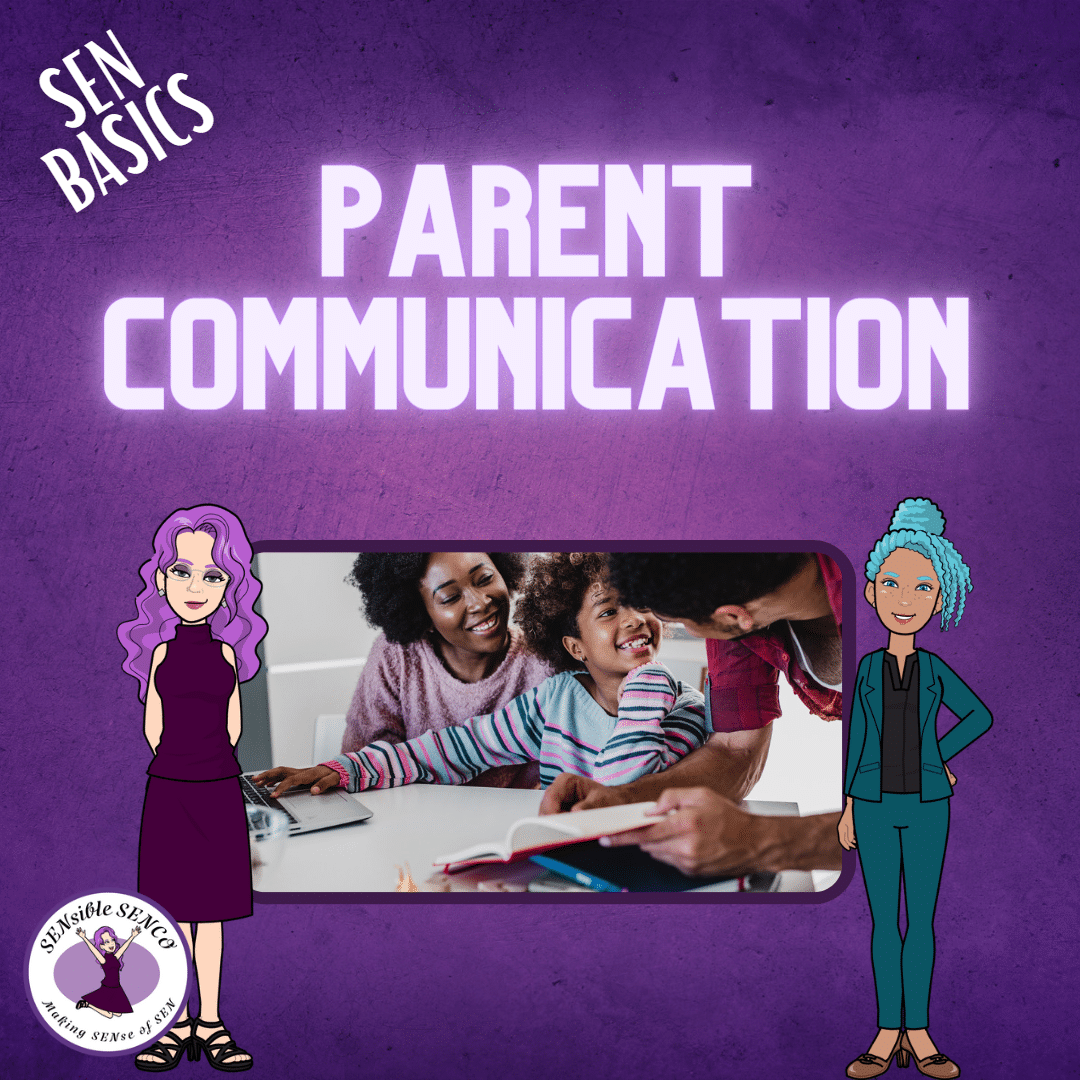Effective Communication Strategies for SENCOs and Parents
Introduction
Effective communication is a critical component of any successful relationship, and this is particularly true when it comes to the relationship between Special Educational Needs Coordinators (SENCOs) and parents of children with special educational needs. SENCOs play a critical role in supporting children with special educational needs and disabilities (SEND) to achieve their potential, and effective communication with parents is essential for ensuring that this support is successful. In this article, we will explore some effective communication strategies that SENCOs can use when interacting with parents of children with SEND.
Establishing a Positive Relationship:
1. Demonstrating empathy and understanding: It is important for SENCOs to understand the challenges that parents face when raising a child with special educational needs. By demonstrating empathy and understanding, SENCOs can establish trust and create a supportive relationship with parents.
2. Active Listening: Active listening involves giving parents your full attention and responding to what they say. This means not interrupting, reflecting back what they say, and clarifying any misunderstandings. Active listening helps parents feel heard and understood, which can strengthen the relationship.
3. Regular communication: Regular communication between SENCOs and parents is key to building a positive relationship. This can include face-to-face meetings, phone calls, emails, and newsletters. The more parents feel informed about their child’s progress, the more likely they are to trust the SENCO and work collaboratively with them.
Providing Clear Information:
Another important aspect of effective communication is providing clear information to parents. This can include:
1. Clear and concise language: Using clear and concise language when communicating with parents can help avoid confusion and misunderstandings. SENCOs should avoid using jargon and technical terms that parents may not understand.
2. Providing written information: Providing written information can help parents to understand the support their child is receiving and any changes to that support. This can include individual education plans (IEPs), progress reports, and handouts that explain different aspects of special educational needs.
3. Use of Visual Aids: SENCOs can use visual aids such as charts, diagrams, and pictures to help parents understand complex information. This can be particularly useful when explaining specific learning difficulties, such as dyslexia or ADHD.
Collaborative Problem Solving:
SENCOs and parents should work collaboratively to solve problems and identify solutions. This can involve:
1. Identifying the problem: When a problem arises, it is important to identify the specific issue and understand its impact on the child. SENCOs should work with parents to gather information and understand the child’s perspective.
2. Generating solutions: Once the problem has been identified, SENCOs and parents should work together to generate possible solutions. This can involve brainstorming ideas and considering the pros and cons of each option.
3. Agreeing on a plan: Once a solution has been identified, it is important to agree on a plan of action. This should involve setting clear goals and identifying the steps that need to be taken to achieve those goals.
Conclusion
Effective communication between SENCOs and parents is essential for supporting children with special educational needs to achieve their potential. By establishing a positive relationship, providing clear information, and working collaboratively to solve problems, SENCOs can build strong partnerships with parents that can lead to positive outcomes for children with SEND. By implementing these strategies, SENCOs can help parents to feel informed, supported, and empowered in their role as advocates for their child.
FAQs
Q: Why is effective communication important between SENCOs and parents of children with special educational needs?
A: Effective communication is important because it helps to establish trust and build positive relationships between SENCOs and parents. This, in turn, can lead to better outcomes for children with SEND, as their needs are more likely to be met and their progress can be monitored more effectively.
Q: What are some effective communication strategies for SENCOs and parents?
A: Effective communication strategies include establishing a positive relationship, providing clear information, and working collaboratively to solve problems. This can involve demonstrating empathy and understanding, active listening, using clear and concise language, providing written information, and using visual aids.
Q: How often should SENCOs communicate with parents?
A: The frequency of communication will depend on the needs of the child and the preferences of the parents. However, regular communication is key to building a positive relationship and keeping parents informed about their child’s progress. This can include face-to-face meetings, phone calls, emails, and newsletters.
Q: What should SENCOs do if there is a disagreement with parents?
A: If there is a disagreement, SENCOs should try to work collaboratively with parents to find a solution. This may involve exploring different options and considering the child’s needs and preferences. If a resolution cannot be reached, it may be necessary to involve other professionals, such as the school’s headteacher or an independent mediator.
Q: How can SENCOs ensure that their communication is accessible to parents with different needs?
A: SENCOs should consider the individual needs of parents and adapt their communication style accordingly. This may involve using alternative formats, such as braille, audio, or large print, for parents with visual impairments. For parents with hearing impairments, SENCOs may need to use sign language interpreters or provide written information. Additionally, SENCOs should be mindful of the language and terminology used and avoid jargon and technical terms that may not be understood by all parents.

Abigail Hawkins FCCT
Director of SENDCO Solutions
Abigail Hawkins was a SENCO for over 25 years and has worked with pupils with all types of needs. Abigail has worked with Ed-Tech companies on developing their software and also been chair of governors for a multi-academy trust. Abigail now runs SENsible SENCO and SENDCO Solutions, with the aim of working with SENCOs and inclusion leaders across the UK to improve their support for SEND pupils. See our school services for more information.




